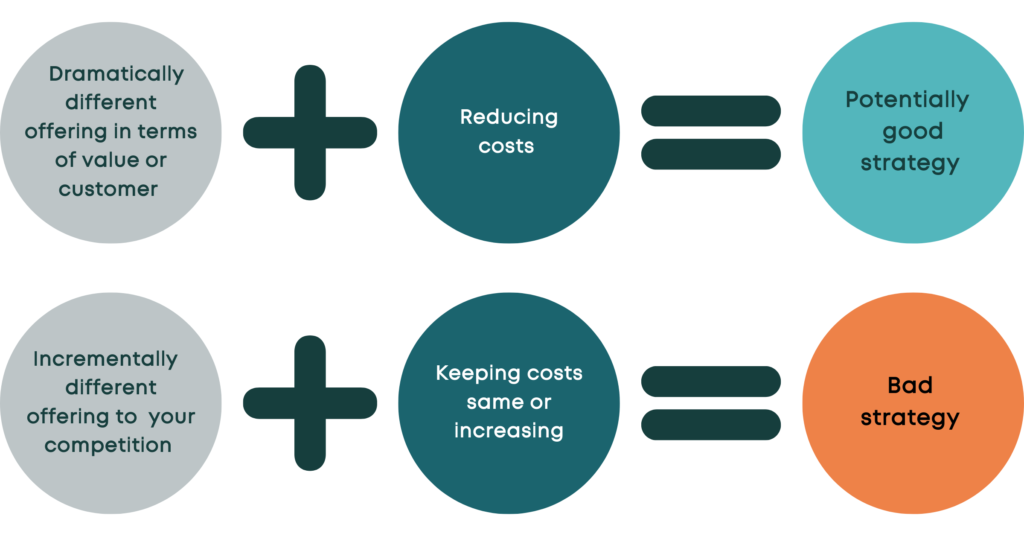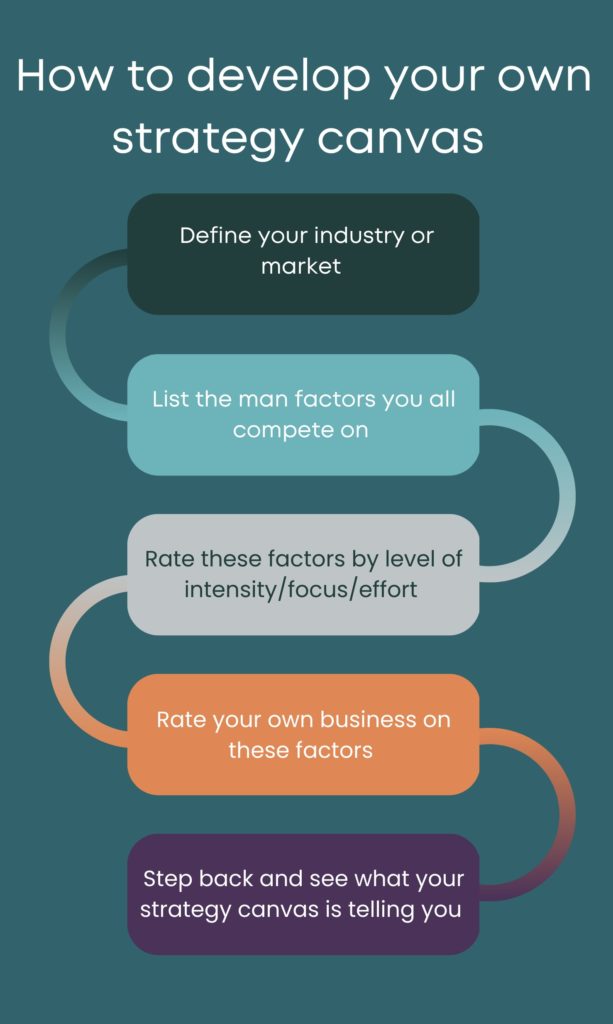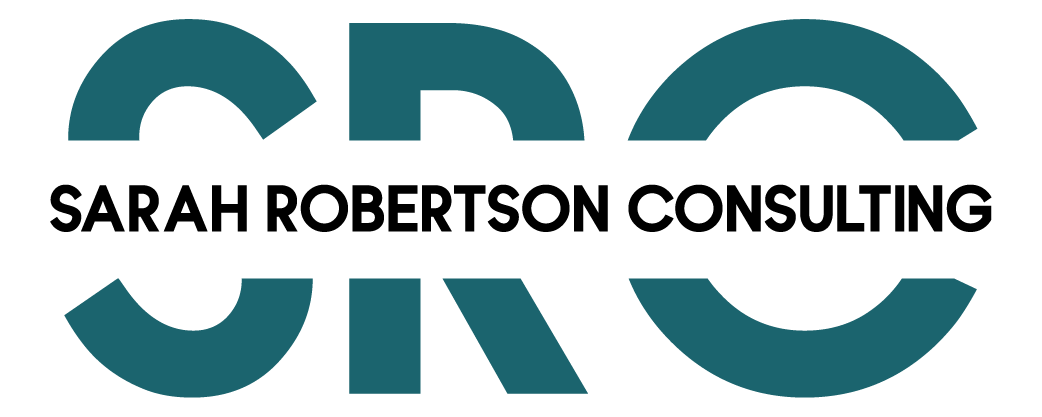Creating a strategy canvas (by Blue Ocean Strategy) is a great starting point for developing a good strategy. It’s also a great starting point for communicating your strategy or to just figure out whether or not you even need a new strategy.
It will enable you to see the factors (services, offerings, activities) that your industry competes on, and from there you can see the opportunities to create new value through innovation AND reduce costs by eliminating or radically reducing factors.
When we look for new business opportunities we often just consider what else we can offer our customers that they get from competitors, or which of our competitor’s customers we could attract. This is when we fall into the trap of doing incrementally more than the competition and often taking a profit hit whilst doing this. This is not a winning strategy.
Realistically your customers will most likely not notice these small differentials in offerings, quality or costs compared to the competition, but it hurts your bottom line. Adding incremental differentiation is easy to copy and soon your industry simply has a new standard that you all compete on.
The smart thing to do is to find a way to dramatically offer more to your customers that is of high value (in ease, convenience, cost, breadth, quality, image etc) to them and reduce your costs.
These bold moves are much harder to copy. They are harder to find. But that is where the process of being more strategic, starting with a strategy canvas, comes in.
Back these bold moves up with core competencies, culture and leadership and you have the makings of a very good strategy.

Here are 5 steps to help you develop your own strategy canvas to map your business against your industry.

Step 1. Define your industry or market.
The key here is to select this based on what you offer and what your competitors offer. You may find that you have two different markets that you play in. For example, a real estate agent may be active in both the market of selling houses for clients and in the adjacent market of renting out houses for landlords. They may have some of the same competitors in each market, but they may have some competitors that are unique to each market. In this example we would do two strategy canvases, one for the house sales market and one for the house rental market.
Step 2. List out the main factors you all compete on
What types of factors are we talking about? Chances are there are service levels, offerings, processes etc that have become so standard in your industry that no one questions them. They are right in front of your eyes but difficult to see. Your strategy canvas brings these factors into focus.
Consider the 2 or 3 main players in your market and list out what they compete on.
Keep this high level, avoid the temptation to dive into differences that you think your customers might see, we are looking for a market overview not a detailed competitor analysis.
Step 3. Rate the factors.
With the main players in your market still in mind, plot the degree of competitive focus they, as a group, put into each factor, from high to low. Resist the temptation to take a customer perspective here, this is about the effort, resources, and focus that the organisation is putting in, which might be very different from the value the customer perceives.
Step 4: Rate your own organisation.
Be critical. Be brutally honest. When you feel tempted to rate yourselves as significantly higher or lower than the main players ask what evidence do you have of that.
Step 5: Analyse
Stand back, admire your strategy canvas and see what the picture is telling you. Chances are you see that you and all your main competitors are focused on the same few factors.
- Are all these factors valued by customers, or have some just become standards that no one questions?
- What if you made the high factor dramatically low?
- What if you removed a factor completely?
- What if you made a low dramatically high?
This is just the start of the questions to ask when you are looking for a strategic edge. In later posts, I’ll share how to deepen the process of uncovering winning strategies, but for now, just using the strategy canvas, you can start to see your market with fresh eyes.
If you want to develop a strategy canvas for your industry or discuss the insights from one you have already created, then book a discovery call.
The Strategy Canvas is a copyright of Chan Kim and Renée Mauborgne, Blue Ocean Strategy Used with permission.


